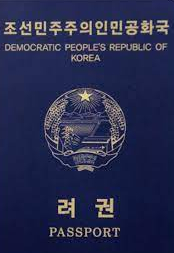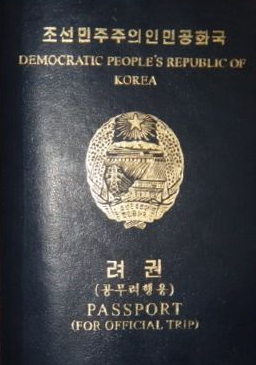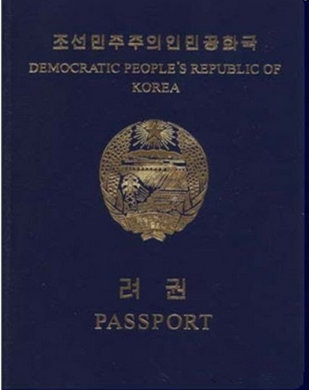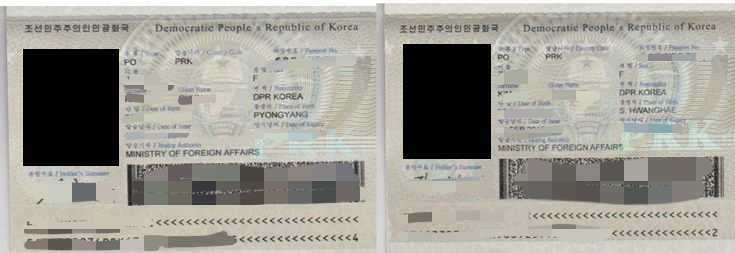The North Korean passport is an incredibly interesting passport for travel geeks and passport nerds out there. However, there are a lot of things unknown about a passport from North Korea, so allow our North Korea passport guide to clarify these facts. There is nothing unique about how the passport looks as it abides to international standards and displays the same information you’ll see on any other standard passport.
Although, in the early days of North Korean passports, way back in the 1950s, those who were issued with DPRK passports had theirs written in Korean, Russian or Chinese only. The reasoning for this was that it was common for North Koreans to only visit China or the USSR. This was quite unique as most other international passports were written in English or French.



How powerful is the North Korean passport?
As of 2021 the North Korean passport currently ranks within the top 10 of least powerful passports in the world coming in at #108 with only 39 countries available for visa-on-arrival access. It currently ranks higher than Nepal, Palestine, Somalia, Yemen, Pakistan, Syria, Iraq and Afghanistan.
The following countries allows visa on arrival or e-visa for North Korean passport holders:
Antigua and Barbuda, Bangladesh, Benin, Cambodia, Cape Verde, Comoros, Côte d’Ivoire, Djibouti, Egypt, Ethiopia, Gambia, Georgia, Guinea, Guinea-Bissau, Guyana, Iran, Jordon, Kyrgyzstan, Laos, Lesotho, Madagascar, Malawi, Micronesia, Mozambique, Myanmar, Nepal, Nicaragua, Palau, Qatar, Russia, Rwanda, Saint Vincent and the Grenadines, Samoa, Sao Tome and Principe, Seychelles, Somalia, South Sudan, Tuvalu, Uganda, Uzbekistan, and Zambia.
North Korean Passport Variations
There are five different types of a North Korean passport and each with their own colour for immigration officers to easily identify. Each passport has 36 pages. You can read more about North Koreans travelling abroad here.
Family / Relative North Korean Passport
The ‘family’ or ‘relative’ passport has a blue cover and is only used for North Koreans visiting China or Russia for family unions. The Korean families living outside of North Korea are most likely a Chinese or Russian nationality which does not make it easy for them to visit their family in North Korea. North Koreans travelling on the family passport must apply for a visa from either the China and Russia embassy located in Pyongyang before travelling. It is common to see many North Koreans travelling on this passport at Dandong, the Chinese border town to North Korea where many North Koreans reside.
Standard North Korean Passport
The standard passport is used by North Koreans studying or working abroad. The colour of this passport is also blue but has a different title on the front cover.
Official North Korean Passport
The official passport is used by North Koreans who are trade officials travelling abroad for official business or sportsmen who participate in international tournaments. The colour of this passport is green. It is quite common to see North Koreans using this passport on an Air Koryo flight between Pyongyang and Beijing.
Diplomatic North Korean Passport
The diplomatic passport is used by political officials and diplomats that represent North Korea. The colour of this passport is red. North Korean ambassadors and embassy staff working at embassies located around the globe are using this type of passport.
Emergency North Korean Passport
Just like anyone and anywhere else in the world, mistakes or accidents can happen. The emergency passport is used when a North Korean loses or damages their original passport whilst overseas. Any North Korean embassy can issue this and can only be used for returning directly home to the DPRK, not for onward travels. The colour of this passport is grey.

Front cover of the North Korea passport
The front cover of each North Korean passport includes the official name of the country in Korean, ‘조선민주주의인민공화국’, and in English, the ‘Democratic People’s Republic of Korea’. The country’s emblem is located on the centre of the page, with the North Korean word ‘려권’, meaning passport, and the English word of ‘Passport’ written below.
On the South Korean passport, the South Koreans use the term ‘여권’, as a slight difference of the Korean language has evolved between the two Korea’s since the division of the country back in 1945. You may read more about the language difference between South and North Korea here.
Inside the cover of a North Korean passport
Located on the inside cover of the North Korean passport includes a statement written in both Korean and English stating the following: “The holder of this passport is under the protection of the Democratic People’s Republic of Korea. All those whom it may concern are hereby requested to allow the holder to pass freely without let or hindrance, and to afford the holder assistance and protection as may be necessary.” This is relatively standard across all international passports.
The ID page of the passport is also the same you’d find on any other international passport. A photo of the passport holder, their name in both English and Korean, a passport number, date of birth, place of birth, passport number and the passport’s issue and expiry date.
So there you have it! On your trip with us to North Korea, whether you’re flying or taking the train, give yourself the edge amongst the other travellers and catch a glimpse of the North Koreans sitting next to you to know a little bit of their back story as they re-enter or exit North Korea.





